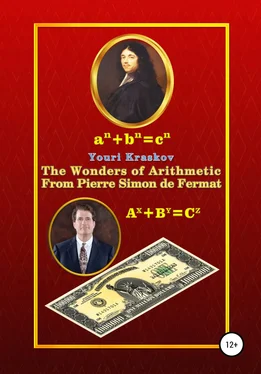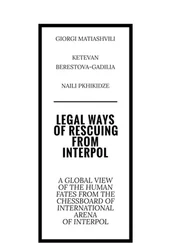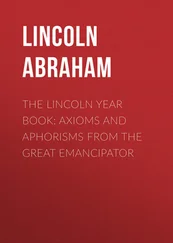https://www.youtube.com/watch?v=ZhVNOgaBStY
In this sense, the following example of solving a problem using the descent method will be particularly interesting because it was proposed in a letter from Fermat to Mersenne at the end of 1636, i.e. the age of this task is almost four centuries! Euler's proof [8] was incorrect due to the use of "complex numbers" in it. However, even the revised version of André Weil in 1983 [17] is too complex for schooling.
3.4.4. Fermat’s Problem with Age 385 years
In the original version in 1636 this task was formulated as follows:
Find two square-squares, which sum is equal to a square-square,
or two cubes, which sum is a cube .
This formulation was used by Fermat's opponents as the fact that Fermat had no proof of the FLT and limited himself to only these two special cases. However, the very name "The Fermat’s Last Theorem" appeared only after the publication of "Arithmetic" by Diophantus with Fermat's remarks in 1670 i.e. five years after his death. So, there is no any reason to assert that Fermat announced the FLT in 1637.
The first case for the fourth power we have presented in detail in Appendix II. As for the case for the third power, Fermat's own proof method restored by us below, will not leave any chances to the solutions of this problem of Euler and Weil to remain in history of science, since from the point of view of the simplicity and elegance of the author's solution this problem, they will become just unnecessary.
Now then, to prove that there are no two cubes whose sum is a cube, we use the simplest approach based on divisibility of numbers, what means that in the original equation
a 3+b 3= c 3(1)
the numbers a, b, and c can be considered as coprime ones, i.e. they do not have common factors, but in general case this is not necessary, since if we prove that equation (1) cannot have solutions in any integers, including those with common factors, then we will prove that coprime numbers also cannot be solutions of the original equation. Then we assume that both sides of equation (1) in all cases must be divisible by the number c 2, then equation (1) can be represented as
c 3= c 2(x+y) = a 3+b 3(2)
In this case, it is easily to see that there is only one way to get solutions to equation (1) when the numbers c, x, y, and x+y are cubes, i.e.
с = x+y = p 3+q 3= z 3; x = p 3; y = q 3(3)
Then equation (1) must have the form:
(z 3) 3= (z 2) 3(p 3+q 3) (4)
Thus, we found that if there are numbers a, b, and c that satisfy equation (1), then there must be numbers p
p 3+q 3= z 3
If we now apply the same approach to solving this equation, that we applied to solving equation (1), we will get the same equation, only with smaller numbers. However, since it is impossible to infinitely reduce natural numbers, it follows that equation (1) has no solutions in integers.
At first glance, we have received a very simple and quite convincing proof of the Fermat problem by the descent method, which no one has been able to obtain in such a simple way for 385 years, and we can only be happy about it. However, such a conclusion would be too hasty, since this proof is actually incorrect and can be refuted in the most unexpected way.
However, this refutation is so surprising that we will not disclose it here, because it opens the way not only for the simplest proof of the FLT , but also automatically allows to reduce it to a very simple proof of the Beal conjecture . The disclosure the method of refuting this proof would cause a real commotion in the scientific world, therefore we will include this mystery among our riddles (see Appendix V Pt. 41).
So, we have demonstrated here solving to Fermat's problems (only by descent method!):
1) The proof of the Basic theorem of arithmetic .
2) The proof of the Fermat's theorem on the unique solving the
equation p 3= q 2+ 2.
3) A way to prove Fermat's Golden Theorem .
4) A Fermat's way to solve the Archimedes-Fermat equation
Ax 2+ 1 = y 2.
5) The proof method of impossibility a 3+b 3=c 3in integers, which
opens a way to simplest proofs of the FLT and Beal conjecture.
6) A Fermat's proof his grandiose discovery about primes in the
form 4n + 1 = a 2+ b 2which we have presented in another style in
Appendix IV, story Year 1680 .
Over the past 350 (!!!) years after the publication of these problems by Fermat, whole existing science could not even dream of such a result!
Before we embarking on the topic "Fermat's Last Theorem" we note that this problem was not solved by Fermat himself using the descent method, otherwise in his FLT formulation there would be no mention of a "truly amazing proof", which certainly related to other methods. Therefore, to the above examples of the application of the descent method we will add our presentation of two methods unknown to today's science. The most curious of these is the parity method.
3.5.1. Defining Parity as a Number
The Basic theorem of arithmetic implies a simple, but very effective idea of defining parity as a number, which is formulated as follows:
The parity of a given number is the quantity of divisions this number by two without a remainder until the result of the division becomes odd .
Let's introduce the parity symbol with angle brackets. Then the expression ‹x› = y will mean:
the parity of the number x is equal to y. For example, the expression "the parity of the number forty is equal to three" can be represented as: ‹40›= 3. From this definition of parity, it follows:
– parity of an odd number is zero.
– parity of zero is infinitely large.
– any natural number n can be represented as n = 2 w(2N – 1)
where N is the base of a natural number, w is its parity.
Based on the above definition the parity, it can be stated that equal numbers have equal parity. In relation to any equation this provision refers to its sides and is absolutely necessary in order for it to have solutions in integers. From here follows the parity law for equations:
Any equation can have solutions in integers if and only if the parities of both its sides are equal .
The mathematical expression for the parity law is W L= W Rwhere W Land W Rare the parities of the left and right sides of the equation respectively. A distinctive feature of the parity law is that the equality of numbers cannot be judged by the equality of their parity, but if their parities are not equal, then this certainly means the inequality of numbers.
3.5.3. Parity Calculation Rules
Parity of a sum or difference two numbers a and b
If ‹a› < ‹b› then ‹a ± b› = ‹a›.
It follows in particular that the sum or difference of an even and an odd number always gives a number with parity zero. If ‹a› = ‹b› = x then either ‹a + b› = x + 1 wherein ‹a – b› > x + 1
or ‹a – b› = x + 1 wherein ‹a + b› > x + 1
These formulas are due to the fact that
‹(a + b) + (a – b)› = ‹2a› = ‹a› + 1
It follows that the sum or difference of two even or two odd numbers gives an even number.
Читать дальше





![Theresa Cheung - The Dream Dictionary from A to Z [Revised edition] - The Ultimate A–Z to Interpret the Secrets of Your Dreams](/books/692092/theresa-cheung-the-dream-dictionary-from-a-to-z-r-thumb.webp)






